
Chateau La Lagune Wines
Located in the appellation of Haut-Medoc, Chateau La Lagune was classified as a Third Growth in 1855. The 80-hectare vineyard of Chateau La Lagune are planted with the emblematic grape varieties of...Read More

In stock. Available for pick-up at store

Pre-arrivals – 2 to 4 months delivery

Pre-arrivals – 2 to 4 months delivery

Pre-arrivals – 2 to 4 months delivery

Pre-arrivals – 2 to 4 months delivery

Pre-arrivals – 2 to 4 months delivery

Pre-arrivals – 2 to 4 months delivery

Pre-arrivals – 2 to 4 months delivery

Pre-arrivals – 2 to 4 months delivery

Pre-arrivals – 2 to 4 months delivery

Pre-arrivals – 2 to 4 months delivery

Pre-arrivals – 2 to 4 months delivery

Pre-arrivals – 2 to 4 months delivery

Pre-arrivals – 2 to 4 months delivery

Pre-arrivals – 2 to 4 months delivery

Pre-arrivals – 2 to 4 months delivery

Wine Futures – delivery in early 2027
Chateau La Lagune | An Organic Bastion of the Haut-Medoc
Boasting a textbook Medoc terroir of gravel and silica soils planted with Cabernet Sauvignon, Merlot and Petit Verdot, Chateau La Lagune is a beloved mainstay of Bordeaux’s Haut-Medoc appellation. The stately chateau itself dates back to the 18th century, though it was in the year 2000 that this Third Classified Growth of 1855 began its most glorious chapter, following its purchase by the Frey family.
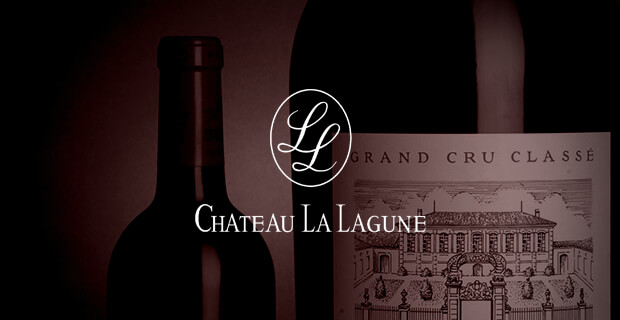
Under the stewardship of Caroline Frey, owner and winemaker, the 200-acre vineyard has embarked on the journey of organic conversion, culminating in organic certification in time for the 2016 vintage. The estate’s Grand Vin is admired by Bordeaux lovers around the world for its unique signature style, which emphasizes smoothness and elegance over just power and structure. This classic Haut-Medoc exudes a full bouquet of ripe and juicy black cherries and cassis, complimented by subtler touches of graphite, new leather and autumn spices. The perfect red wine for a romantic dinner for two.
The History of Chateau La Lagune
Situated just 15 kilometers from the city of Bordeaux, Château La Lagune boasts a rich history dating back to the 16th century. The estate was established at around the same time that Dutch engineers started draining the water from the marshes and swamps that previously occupied the Medoc. The handsome chateau itself was designed by Baron Victor Louis (famous for designing Bordeaux’s Grand Theater), and constructed between 1715 and 1734. The vineyards of the estate were first planed in 1724. In the century that followed, the chateau changed hands several times, passing from one family to another, but continuing to produce Bordeaux wine of quality. In the classification of 1855, La Lagune earned the title of Third Classified Growth, and was purchased by the Seze family a few decades later.
Having suffered considerably due to World War II, the economic crisis and the great frost of 1956, the chateau was in serious need of attention by the time Georges Brunet acquired it. Brunet invested significantly in the property, replanting the vineyard and increasing its size by purchasing the adjacent Petit La Lagune vineyard. Brunet also renovated the winery and renamed the estate’s First Wine “Grand La Lagune” to “Chateau La Lagune.” By the early 1960’s, however, Brunet fell upon hard times and sold the chateau to the Ayala Champagne House. It was acquired in 1999 by the Frey family, who also currently own Maison Jaboulet in the Rhone Valley and significant shares in the Bollinger Champagne House.
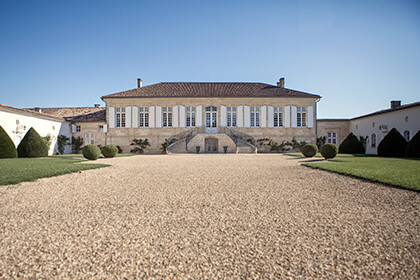
Under the stewardship of the Frey family, La Lagune was fully restored to its 1855 glory. The Freys invested significantly in rejuvenating the vineyards, purchasing the 8.9-hectare (22 acre) Chateau d’Arche vineyard (which was part of La Lagune at the time of the 1855 classification). They have also built a brand-new, state-of-the-art winery and completely refurbished the chateau. In 2004, the family introduced a Third Wine, named Mademoiselle L.
Today, Caroline Frey is the owner and winemaker at Chateau La Lagune. Her focus, since the beginning, has been to implement environmentally friendly practices in the vineyard, based on organic and biodynamic viticultural principles. The official conversion of the estate vineyards to organic began in 2013 and in 2016, La Lagune earned its organic certification.
A Classic Medocain Terroir
Chateau La Lagune is a Third Classified Growth of 1855 situated in the Haut-Médoc appellation on the Left Bank of Bordeaux. The vineyard extends over 80 hectares (200 acres), and is composed of roughly 60% Cabernet Sauvignon, 20% Merlot and 10% Petit Verdot. The vines are planted on a south-facing hill of well-drained gravel and silica, the signature soil of the Medoc, which lends a beautiful balance and smoothness to the wines.
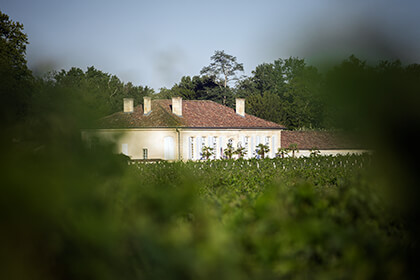
The La Lagune vineyard was converted to organic farming between 2013 and 2016. As Caroline Frey explains, a natural approach was fundamental to achieving high-quality wines. These techniques have allowed the fruit to draw complexity out of the soils, a complexity that is maintained through the very precise vinification that follows harvest.
Careful Selection and Plot-by-Plot Winemaking
At La Lagune, all the grapes are harvested by hand and transported to the gravity-fed winery in small crates. Following manual sorting in the vineyard, the fruit also goes through strict optical sorting on three different sorting tables upon arrival to the winery. The fruit is then dropped into 72 thermo-regulated stainless steel vats, which range from 2,200 to 20,000 liters and size, and were designed for plot-by-plot vinification. The fermentation is slow and gradual, with the tannins and aromatic component extracted gently from the skin to the juice. Malolactic fermentation takes place in the vats once alcoholic fermentation is complete. The wines are then blended before they are matured.
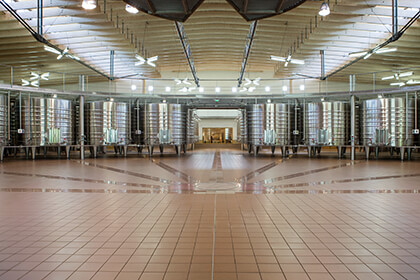
The blend of the estate’s namesake Grand Vin is aged for a period of 18 months and exclusively in French oak barrels, of which roughly 50% is new each vintage. During this ageing process, the wine is racked several times in order to eliminate the gross lees and result in a more elegant wine. The aged wine is fined with egg whites, as is traditional in Bordeaux, just before bottling.
The estate’s Second Wine, named Moulin de La Lagune is produced from the younger vines of the estate and aged in approximately 40% new French oak barrels for a period of 12 months before bottling.
How Best to Enjoy these Classic Haut-Medoc Wines
The wines of La Lagune are made in a style similar to that of Margaux, known for emphasizing elegance and smoothness over pure power and structure. Nevertheless, there is plenty of structure for the wines to age beautifully over the course of time in the cellar. Moulin de La Lagune can age for 10-15 years, while the Grand Vin will evolve beautifully over 20 years or longer in your cellar. To fully enjoy these wines, we recommend serving them at 16 -18°C (61-64°F). We also recommend decanting the younger vintages for around 2 hours to allow the wine to soften and open up. Old vintages will not need too much decanting, just a few minutes of airing and removal of the sediment.
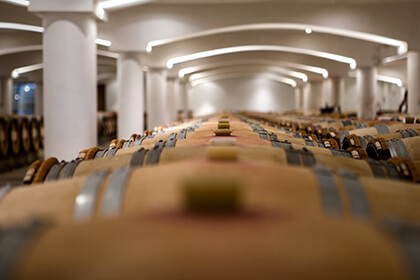
Of course, each vintage of Chateau La Lagune Haut-Medoc has its own unique personality and aromas. Nevertheless, this wine tends to be garnet-purple in color, with intense aromas of cassis and black cherries, with nuances of graphite, fresh leather, and spices. On the palate, the wine is usually medium in body with very vibrant red berry flavors layered with earthy flavors upon a firm and chewy structure. The finish is lively with great persistence. We recommend pairing the wines of La Lagune with a roast lamb or duck, as well as roasted vegetables.